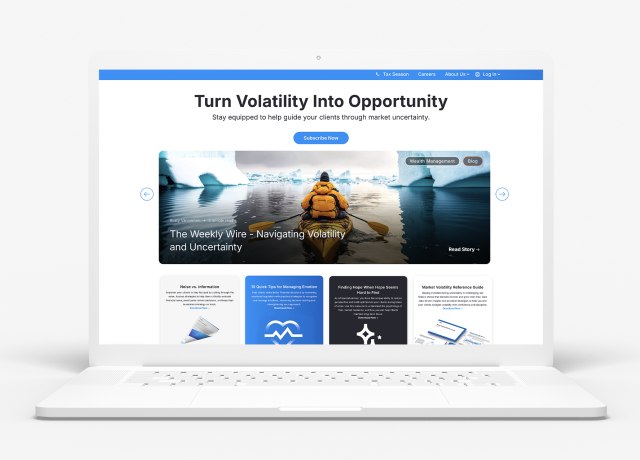- Last week was another strong week, including a 9-day winning streak that has erased all the recent losses since “Liberation Day” on April 2nd. Gains were driven by easing sentiment, resilient corporate earnings, and better-than-expected jobs data.
- It was a busy week for economic data. While GDP contracted for the first time in 3 years, job growth surprised to the upside, inflation moderated slightly, and key tech names helped lift earnings growth expectations.
- Caution is still warranted. With weak consumer sentiment, seasonal headwinds, and volatility lingering, maintaining diversification and discipline remains the best path forward.
Last Week in the Markets
U.S. stocks posted another strong performance last week, marking the first back-to-back weekly gains of the year. Even more notably, a rare 9-day winning streak (its longest in over 20 years) helped erase all the market losses since the April 2nd selloff, often referred to as “Liberation Day.”
Several factors contributed to the rally: the market’s previously oversold condition, deeply bearish sentiment ripe for a reversal, easing trade tensions especially regarding optimism about possible US-China talks, resilient corporate earnings, and generally better-than-expected labor data.
In other notable market moves last week, the U.S. dollar gained but still logged its worst two-month decline since 2002, down nearly 8%. Crude oil prices dropped 8%, their lowest level since March 2021, and suffered a staggering 19% decline in April, among the steepest monthly losses in over four decades. And on Friday the MSCI All-country World Index Ex the U.S. (measuring all developed and emerging market stock markets minus the U.S.) made a new high on the year.
Economic Data: Mixed Signals
It was a busy week on the economic front. The highlight was Friday’s non-farm payrolls report, which beat expectations with 177,000 new jobs versus the forecasted 138,000. The unemployment rate remained steady at 4.2%. Earlier in the week, the Fed’s preferred inflation gauge, the Personal Consumption Expenditures (PCE), remained tame and below 3% like other inflation measures.
On the downside, Q1 GDP disappointed at -0.4%, the first contraction since early 2022. On the one hand, net imports exaggerated the economic contraction. On the other hand, consumer spending has waned. Indeed, later in the week consumer confidence continued to erode, hitting a new low.
Corporate earnings were strong overall. While Amazon and Apple disappointed, strong results from Microsoft, Meta, and others lifted aggregate earnings growth. That said, forward guidance weakened as the second quarter earnings growth expectations dropped by over 2% so far on growth and tariff concerns. For the calendar year 2025, analysts are now projecting earnings growth moving closer to 9%, down from around 15% at the start of the year.
Looking Ahead: Eye of The Storm?
This week brings more earnings reports from names like Palantir, Ford, Disney, Uber, and Coinbase. The Fed also announces its interest rate decision Wednesday, where a “no cut” outcome remains the most likely scenario.
As for the stock market, are we witnessing calm within a storm or signs of clearing skies? There are a few things to keep in mind. First, April was among the most volatile months in years, and volatility often breeds more volatility. While “peak tariff concerns” may be behind us, their full economic impact has yet to appear in the data.
Second, soft data such as consumer sentiment surveys, though noisy and occasionally exaggerated, tend to lead harder economic figures. Continued pessimism from consumers and business leaders could still weigh on economic decision-making. For example, a drop in maritime traffic suggests that the worst is yet to come.
Third, there are also seasonal and technical clouds on the horizon. We are entering the historically weaker “Sell in May and Go Away” stretch. While returns during this period tend to be below average, they are still positive and typically better than cash. Technically, markets remain in “correction” mode, and history shows that sharp recoveries from declines often lead to choppier, subpar performance in the near term.
Staying Disciplined Amid Uncertainty
In the face of these crosscurrents, and expected volatility, let us first lean on the advice of investment great and now retiring Warren Buffett who just reminded investors last weekend: “Surprising things happen in the world and, in turn, in the stock market…If the world changing makes you change your investment goals, it is time to rethink your strategy. The market is not a great place for those who get excited when it is up and scared when it is down.”
Next, Orion’s Chief Behavioral Officer Dr. Daniel Crosby, recently offered this timely advice: “Markets are unpredictable, and uncertainty is a constant. Successful investors do not avoid volatility—they navigate it with a clear process.”
Every investor is different. Nonetheless, we believe that staying invested, staying diversified, and staying disciplined to one’s investment plan and process is crucial to navigating the market’s inevitable volatility.
if you have any questions, please don’t hesitate to reach out to us at strategists@brinkercapital.com or at rusty@orion.com. Thank you for your time and trust.



























